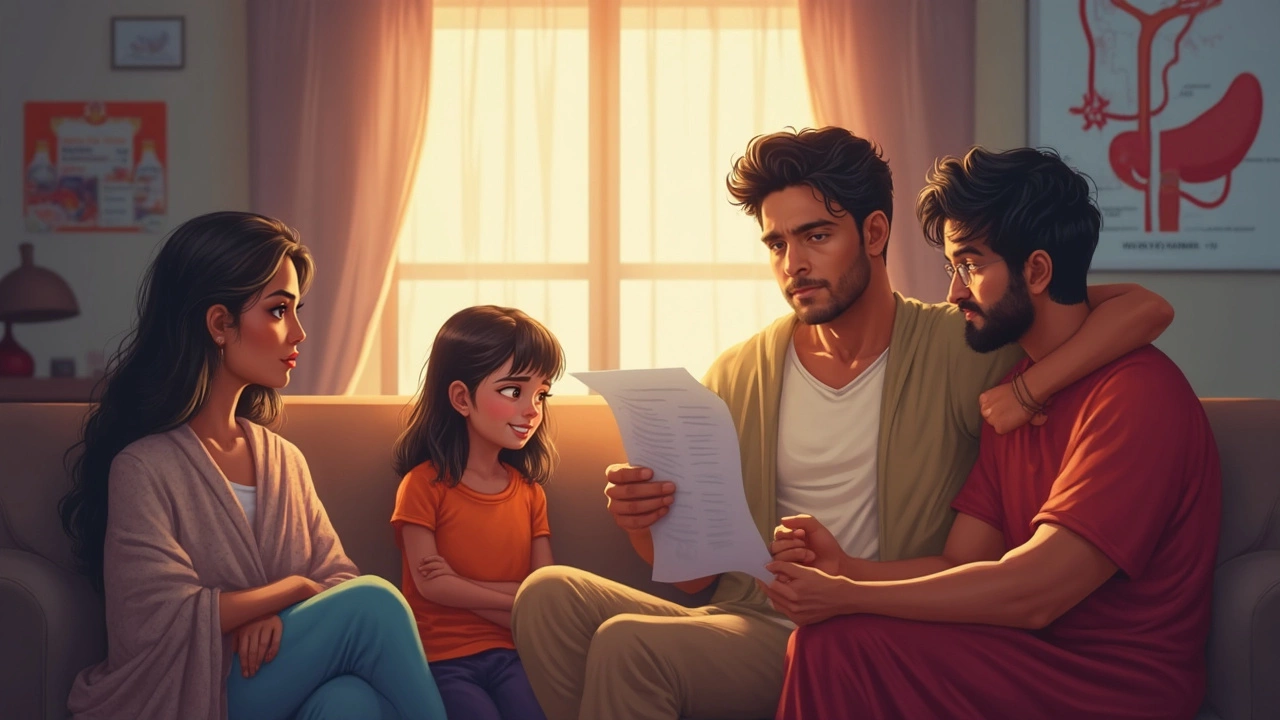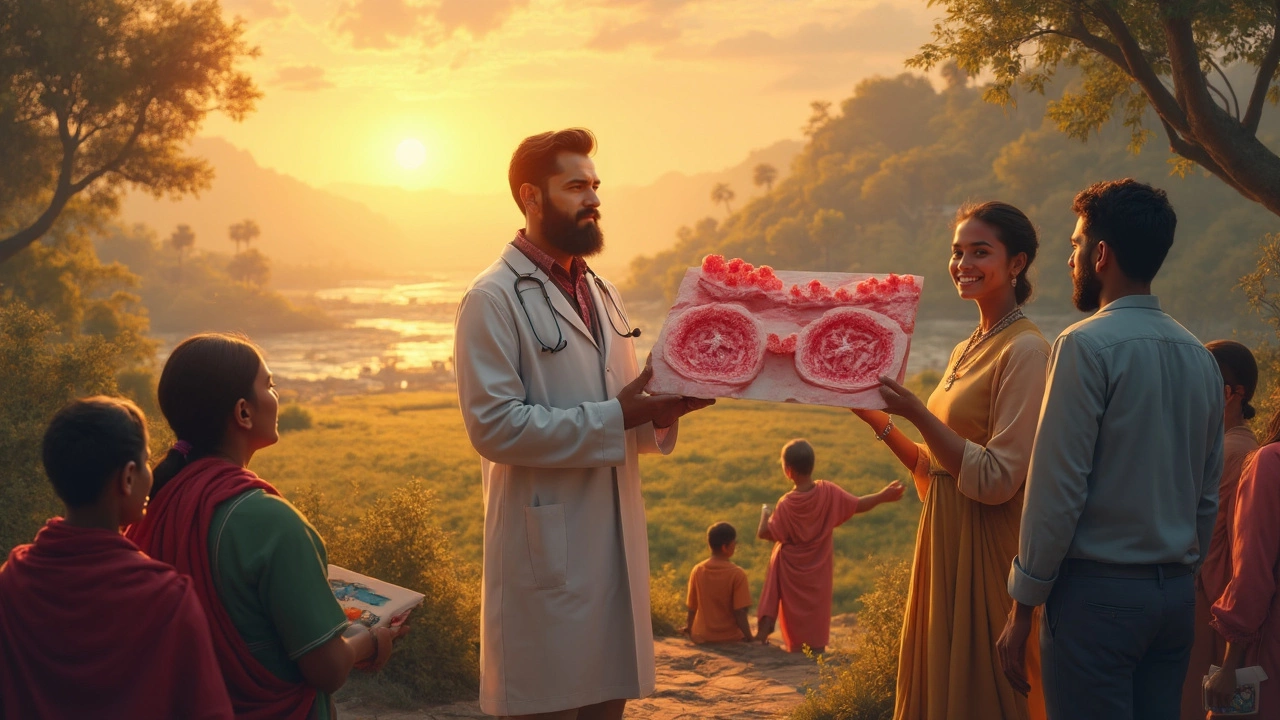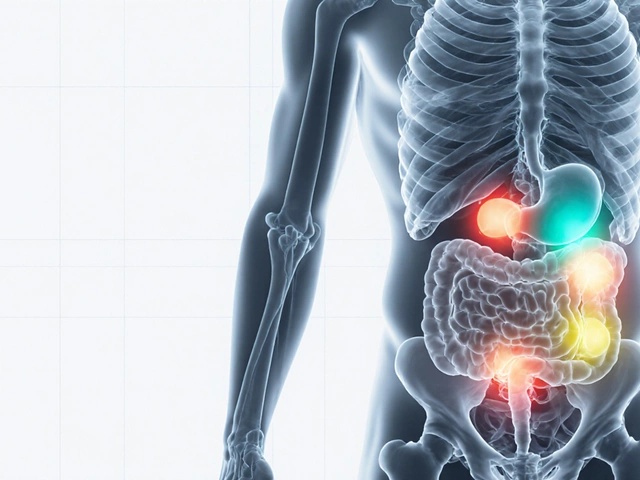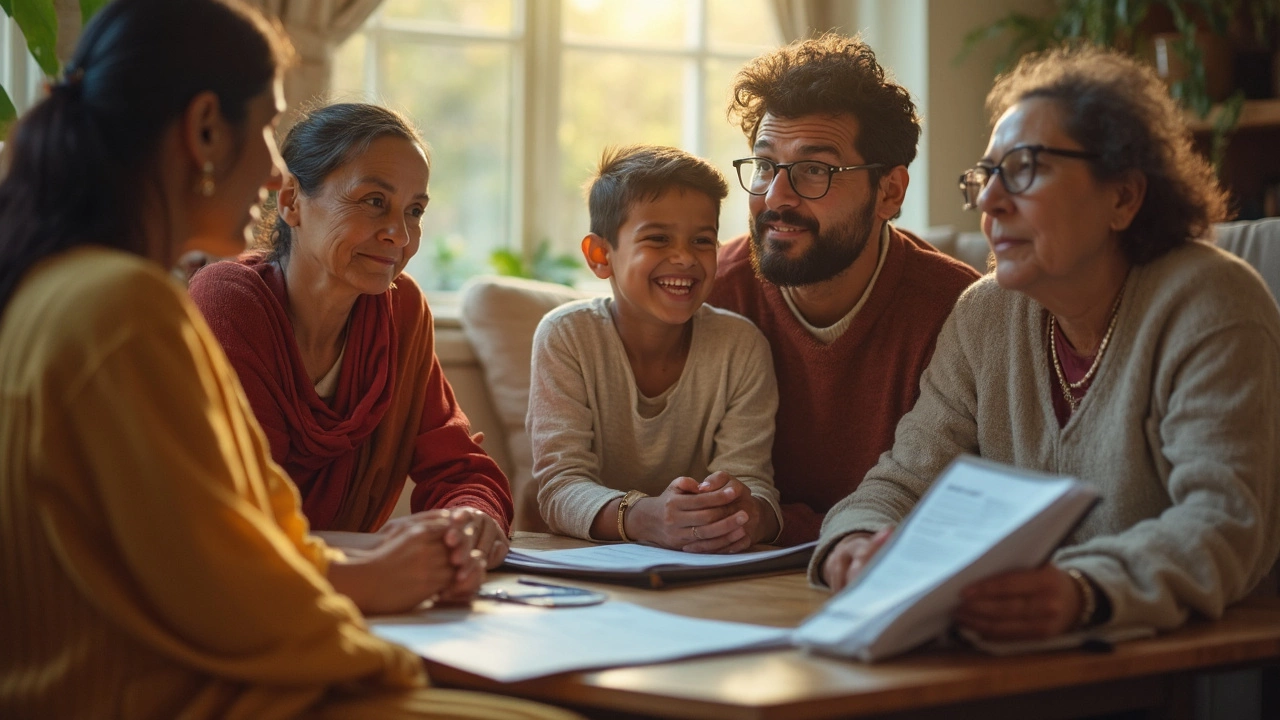
Ask ten people how long a cancer patient might live, and you’ll hear ten different stories. Some talk about relatives who’ve beaten the odds for years, while others share heartbreakingly short timelines. There’s a mix of hope, fear, and plain confusion—largely because there’s no single answer. Cancer doesn’t play by one rulebook. Your body, the cancer’s type, your treatment plan, and just plain luck all matter.
Doctors talk about survival in terms like “median survival” or “five-year survival rates.” But those stats don’t tell you what’s going to happen in your specific case. One person might live just a few months, while another with the same diagnosis might be chatting about their next vacation ten years later. The science is solid, but it’s not the whole story.
If you’re staring down a tough diagnosis—or watching someone you love go through it—numbers can feel cold or even useless. What actually affects the outcome? What gives some people an edge? Should you chase the newest treatments, or does lifestyle matter, too? Instead of just quoting stats, let’s dig into what doctors actually look at, and what people can actually control.
- Why Survival Times Vary So Much
- Key Factors That Change the Odds
- Understanding Survival Stats: What Do They Mean?
- Real Examples: Who Beats the Odds?
- Tips That Can Make a Difference
- What Hope Looks Like in 2025
Why Survival Times Vary So Much
You hear about people with the same type of cancer living wildly different lengths of time. Why does that happen? The truth is, a bunch of stuff factors in. It isn’t just about the cancer itself—it’s about the person, the timing, even how and where you get treated.
First off, not every cancer is the same. Some, like testicular cancer, have high cure rates, while others like pancreatic cancer can be harder to treat. Where the cancer started and whether it spread matter a lot—even a couple months can make a world of difference if you catch it early.
Here’s a quick look at how life expectancy varies for some common cancers. These are general numbers, and real life doesn’t always follow the script:
| Cancer Type | Median Survival Time (Years) | 5-Year Survival Rate (%) |
|---|---|---|
| Breast Cancer (early) | >10 | 90 |
| Lung Cancer (all stages) | ~1 | 18 |
| Prostate Cancer (localized) | >10 | 98 |
| Pancreatic Cancer | <1 | 12 |
| Leukemia (children) | >10 | 85 |
Now, just comparing numbers isn’t really fair, because things like age, general health, and response to treatment all play their part. For example, a younger person will usually bounce back better after chemo. If you’re dealing with other health issues at the same time—diabetes, heart problems, or even just being older—those can lower your chances too.
The cancer survival rates you see online are based on big groups. But treatments have changed a ton in the last 5-10 years, especially for tough cancers like lung or melanoma. Immunotherapy and targeted treatments are helping people live a lot longer these days compared to stats from back in 2010.
- The kind of cancer, where it is, and if it’s spread—all change what doctors predict.
- Age and how healthy you are when you’re diagnosed can boost or lower your odds.
- Treatments work better for some people, depending on their genetics and even their attitude toward care.
- And sometimes… yes, it’s just luck. Two people can do everything right and still get very different results.
Bottom line: everyone wants to know the “average” life expectancy, but what actually matters is your specific story, the treatment plan, and how your body responds over time.
Key Factors That Change the Odds
If you want the honest truth, there’s no shortcut to figuring out how long a cancer patient might live. But some things carry way more weight than others. Let’s break down what actually changes the game.
- Cancer type: Some cancers are slow-moving and easier to treat, like thyroid or some prostate cancers. Others, like pancreatic or lung cancer, are way more aggressive.
- Stage at diagnosis: Catching it early means the cancer hasn’t spread much yet, so treatment usually works better. If it’s already spread to other body parts (that’s called metastatic), the odds aren’t as good.
- Age and general health: A fit 40-year-old will usually handle treatments differently than someone much older with heart or kidney issues on the side.
- Treatment options: Access to specialized care, clinical trials, or the latest technologies can sometimes make a big difference.
- Genetics and tumor markers: Some cancers have certain "biomarkers" that make them respond super well to newer drugs. Others, not so much.
Here’s a quote that sums it up really well:
"Survival rates are important, but they’re averages. The factors that matter most are the type of cancer, stage at diagnosis, and the patient’s overall health. Personalized medicine is making a huge difference in recent years."
— Dr. Alexandra Gupta, Oncologist, Cleveland Clinic
Let’s look at what the numbers say. This table shows five-year cancer survival rates by cancer type in the U.S. (American Cancer Society, 2024):
| Cancer Type | 5-Year Survival Rate |
|---|---|
| Breast (female) | 91% |
| Prostate | 97% |
| Lung | 24% |
| Pancreatic | 12% |
| Colon | 65% |
| Thyroid | 98% |
That’s a huge spread. Two people with different cancers might have odds that look nothing alike, even if they’re both getting the best treatment out there.
One thing folks forget? Your attitude and support system matter a ton. People with solid family backup or someone who’ll fight for the best care often do better than those who just try to handle it alone. So if you’ve got someone in your corner—or you’re willing to ask questions and push for the right care—you’re helping your odds, too.
Understanding Survival Stats: What Do They Mean?
Doctors throw around terms like “five-year survival rate,” “median survival,” and “progression-free survival” all the time. But what do these stats really mean? Most importantly, how do you make sense of them without just stressing out?
The cancer survival rate often gets quoted as a percentage. For example, if a type of cancer has a five-year survival rate of 70%, that means 70 out of 100 people are still alive five years after their diagnosis. It doesn’t mean everyone else passes away by year five—it just measures how many were alive at that particular point. Plenty of people outlive that marker by a long shot.
"Median survival" sounds complicated but isn’t. It’s just the point where half the people in a study are still alive and half aren’t. If the median survival is 18 months, some people live longer, some less. Median numbers help doctors talk about what they’ve seen most often, but it never predicts what will happen to you, personally.
Progression-free survival is another common term. Instead of tracking who’s alive, it’s about how long the cancer doesn’t get worse. This is critical when new drugs hit the market—a treatment might not cure cancer, but it could help people stay stable for longer.
These numbers are helpful for planning, but they’re not destiny. Survival stats are based on what happened to large groups, often years before you even get your diagnosis. Treatments change fast. Even two people with the same cancer type can have completely different journeys because of age, overall health, and even things like what hospital they choose.
- Don’t put too much stock in a single survival percentage or median number.
- Always ask your doctor about the latest treatments—stats may be outdated.
- Focus on your own situation instead of averages.
The bottom line: survival stats give a rough map, not a crystal ball. They help set expectations, but real-life stories often look very different from the tables and charts you’ll find online.
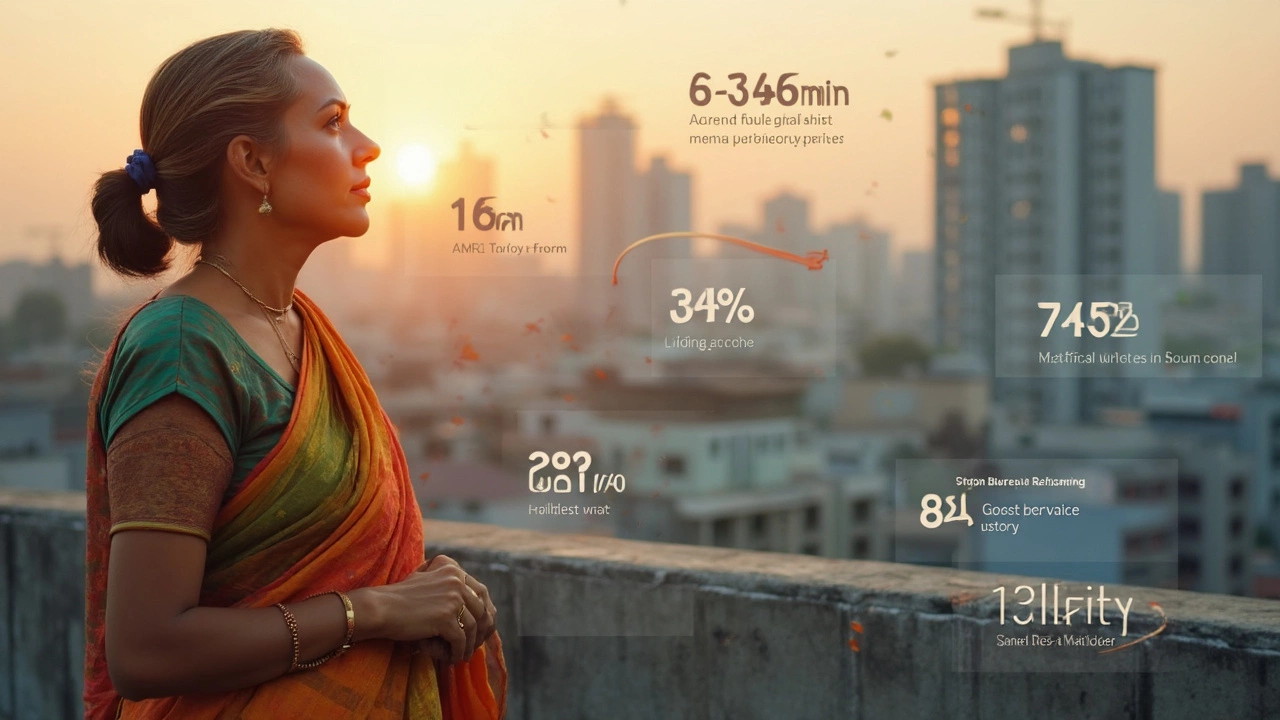
Real Examples: Who Beats the Odds?
It’s wild how often cancer patients shrug off the odds and keep going far beyond what any chart suggests. You hear about people living five, ten, even twenty years after a rough diagnosis. The key is, these aren’t just rare miracles—they’re happening more as treatments get better and people get smarter about their health habits.
Let’s look at a few common cancers that have surprised everyone with how long people can survive. Remember, none of these folks had a magic recipe. What most had in common was getting treatment that fit their thing exactly, and having a support system that didn’t quit. Also, breakthroughs in medicines and better surgery are changing the game every year.
The cancer survival stories below are real, pulled straight from hospital data and big studies. Here’s some hard data that really puts things in perspective:
| Cancer Type | Stage at Diagnosis | Median Survival (Years) | Long-term Survivors (≥10 Years) |
|---|---|---|---|
| Breast | Early (I/II) | 10+ | 85%* |
| Lung | Advanced (IV) | 1 | 5%† |
| Melanoma | Metastatic | 4 | 40% (with new immunotherapy) |
| Colon | Advanced (IV) | 2.5 | 10% |
| Prostate | Any | 15+ | 98% (localized) |
*Regular screening (like mammograms) helps. †Recent targeted treatments are improving things fast.
Here’s the cool part: there are people out there who have had stage IV melanoma and are still going strong thirteen years later, especially since immunotherapy drugs became routine in 2015. You’ll also find folks with advanced colon cancer who’ve responded so well to a cocktail of chemo, surgery, and biologic drugs that they’ve basically hit a "normal" life span.
I remember reading about Tom, a dad from Texas, who got stage IV lung cancer at 52. With new gene-targeted drugs, he’s hiking again, six years on. There are thousands of stories like his—real people, real extra years bought with the right meds and serious grit.
So, what does this mean if you or someone you love is facing those scary numbers? Don’t get locked into averages. Ask about what’s new in treatment. Get a second opinion. If you’re eligible for a clinical trial, check it out—it could be the thing that pushes you into the “long-term survivor” crowd.
Bottom line: the numbers are only the start of the story. The way treatments are moving, and with the right playbook, beating the odds isn’t just a headline—it’s happening all over.
Tips That Can Make a Difference
If you’re wondering what you or a loved one can actually do to boost the odds, there’s stuff you can control, even though cancer often feels random. These aren’t magic bullets, but they do shift the numbers—sometimes more than folks expect.
First, following your treatment plan as closely as possible has a huge impact. A study in 2023 showed that missing just a few chemo or radiation sessions could lower your cancer survival chance by up to 15%. Those appointments and meds matter, even on rough days.
Eating well isn’t about miracle diets, it’s about keeping your body strong. Even simple changes—like adding more protein or getting enough calories—can help you handle treatments better and bounce back faster. One tip: bring snacks you actually like to appointments. Mira started carrying little cheese cubes and peanut butter packets after her cousin’s sessions because it kept energy steady and nausea in check.
Exercise can seem impossible when you’re tired or in pain, but even short walks or gentle stretches count. In a real trial at UCLA, breast cancer patients who did light exercise three times a week had about 25% fewer side effects and often finished their treatments stronger.
Don’t ignore mental health. It’s not about “staying positive” all the time—nobody can do that. But talking to a counselor, finding a local support group, or just venting to a friend helps people cope better, finish treatments, and sometimes even recover faster.
Here’s a quick table with things that really move the needle:
| Action | Impact on Survival/Quality of Life |
|---|---|
| Sticking to treatment schedule | Up to 15–20% higher survival rates |
| Regular light exercise | Up to 25% fewer severe side effects |
| Managing nutrition | Less weight loss, better response to treatment |
| Addressing mental health | Lower stress, improved daily function |
| No smoking or drinking | Longer survival in multiple cancers |
Also, ask your doctor if there’s a new clinical trial or a different treatment that might suit you. Sometimes just finding out about an option you didn’t know exists adds real months or years. Stay curious, push for answers—doctors expect it! Even little questions, like how to handle a side effect, can make a real difference day to day.
What Hope Looks Like in 2025
There’s a lot more hope for people with cancer than ever before. In 2025, treatments look very different from just five years ago. New drugs, personalized medicine, and better access to clinical trials are changing the core question: “How long can a cancer patient live?”
Let’s get specific. Immunotherapy is now a first-line option for many cancers that used to have just chemotherapy. Targeted drugs mean fewer people deal with blanket side effects. Even in tough cases, some patients live way longer than doctors would have guessed in the past. The five-year survival rate for all cancers in the U.S. is now about cancer survival 69%—that’s almost double from what it was in the 1970s.
| Year | 5-Year Survival Rate (All Cancers, U.S.) |
|---|---|
| 1970 | ~39% |
| 2000 | ~63% |
| 2025 | ~69% |
People have more choices today: telemedicine visits, remote monitoring, and even genetic testing done from home. Doctors match treatments to your cancer’s DNA fingerprint—so what works for you might be totally different from what your neighbor needs.
Here’s what matters right now:
- Clinical trials are easier to join—with many being available outside big hospitals.
- Artificial intelligence scans medical records and images faster, helping spot what works and what doesn’t.
- Patients and families connect online and share what’s working—you’re not alone in the dark anymore.
So is everything perfect? No way. Some cancers still have stubbornly low survival rates, and costs are still tough for plenty of families. But people are living longer, and the odds look better every year if you have access to current treatment.
So don’t let old stats shape your outlook. Talk to your doctor about what’s truly possible now—not what they saw back in medical school. If you’re looking for practical hope in 2025, it’s not false optimism. It’s about knowing that the playbook just got a lot bigger and smarter.
Categories
Popular Articles

Apr 1 2025
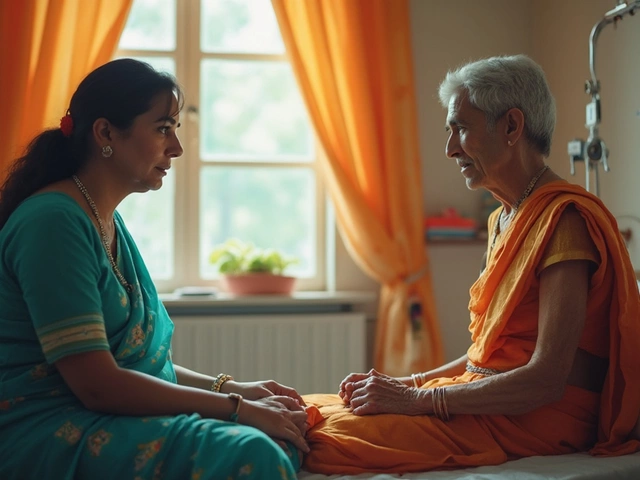
Mar 17 2025

